15 things I didn’t know about the Holy Land (and some of my favorite things there)
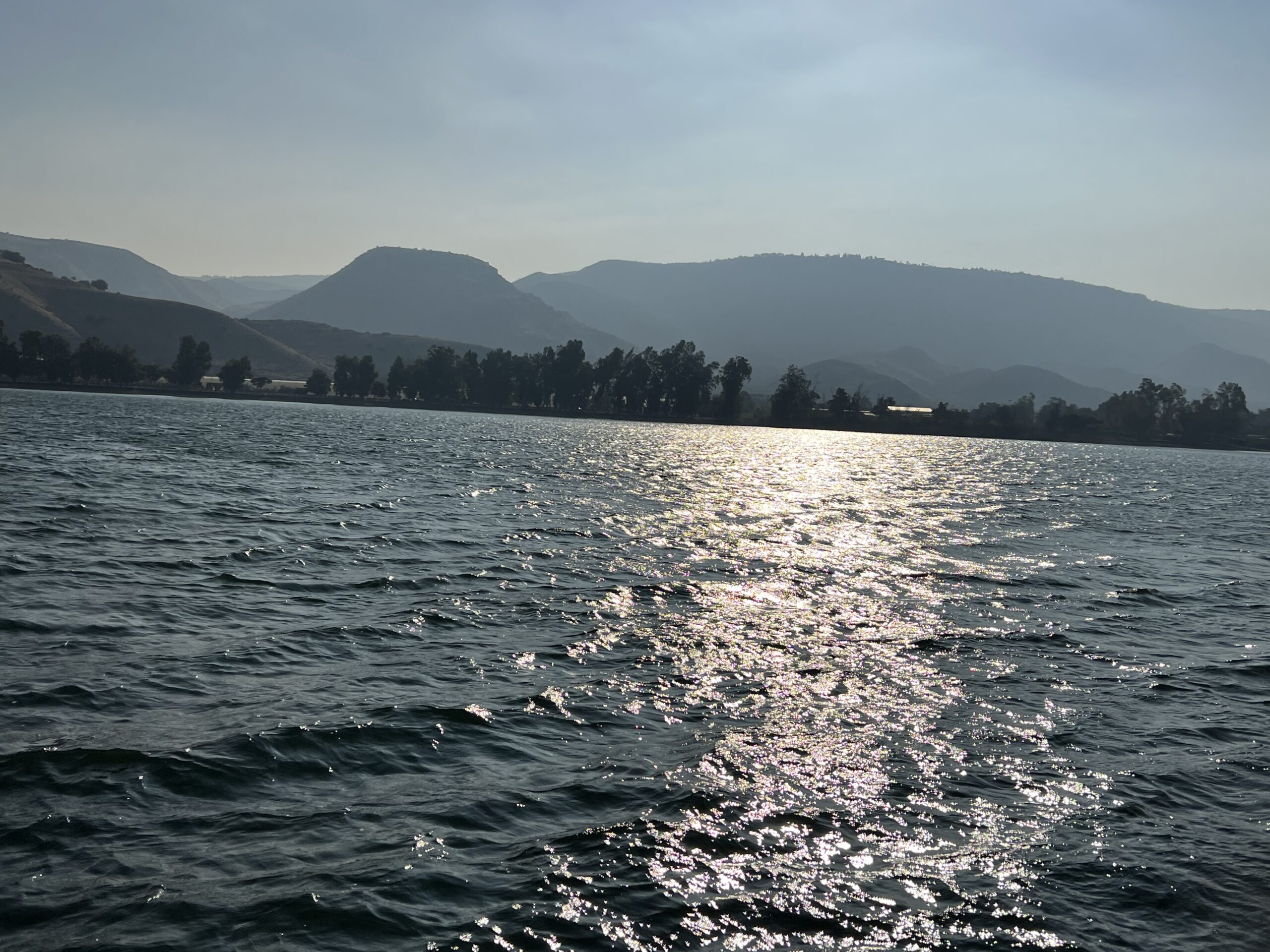
We just returned from a 12-day trip to the Holy Land, touring 40 sites with 29 amazing people. My mind is still blown with information about archeology, Israeli history, Biblical stories, and God’s themes of love and longing. When something is the last thing you think about at night and the first thing you think about in the morning, you know it’s changed you forever.
I just can’t stop processing the layers.
I’m a big traveler. When I go somewhere, it becomes a part of me. I document everything, cherish everything, talk about everything, and plan return trips to catch all the things I missed. My mission trips take me one step further because they carve crevasses into my soul. When you invest in people far from home, you leave them pieces of your heart.
I guess that’s why I hurt for so many places in the world.
This trip was all that and more. I feel almost like I’ve gotten a glimpse of heaven, and I’m left speechless by its glory.
I walked where Jesus walked. I taught where Jesus taught. I cried where Jesus cried.
I’m wrecked.
I’m a Bible story person, so I was really excited to see where everything happened, understand the context and metaphors, and untangle the threads that weave the Old and New Testaments together. Here is just a smidgen of what I didn’t know about the Holy Land:
- Israel is the size of New Jersey. Everything that happened in the Bible (other than the exiles) happened in a land 100 miles by 50 miles. This picture is the inside of the cave (roof has sunk in) at En Gedi, where David and his troops hid from King Saul, and David cut off the fringe of Saul’s robe. It was quite a hike to get up here. A great hiding spot with abundance of water in the middle of wilderness.

- Israel is a country of paradoxes. The climate and vegetation is varied and beautiful. Desolate wilderness, mountains, waterfalls and lakes, palms and olive trees. Wind and cold in winter and unrelenting heat in summer. Bedouins herd camels. Jews wear tassels under their coats. Soldiers fresh out of high school walk with AK-47s slung over their shoulders. Everything makes you pause. And camel-riding is really fun.
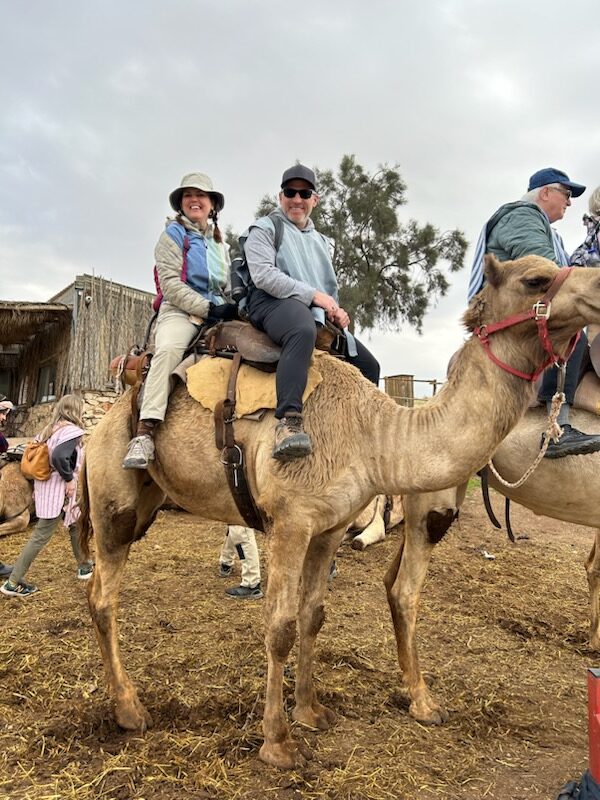
- When the Muslims conquered Jerusalem and built the Dome of the Rock, they intentionally covered up Jewish history and artifacts. Although much has been retrieved from other parts of Jerusalem, whatever’s under the Temple Mount remains hidden. Many archeologists believe the Arc of the Covenant lies buried under the Dome of the Rock. Tunnels beneath the Jewish Quarter have little prayer spaces carved out, where Jews lay their hands on the walls, some 90 feet from where the Arc must sit, praying to the Holy of Holies. That and the Wailing Wall challenged me with the intense faith and resilience of the Jewish people.
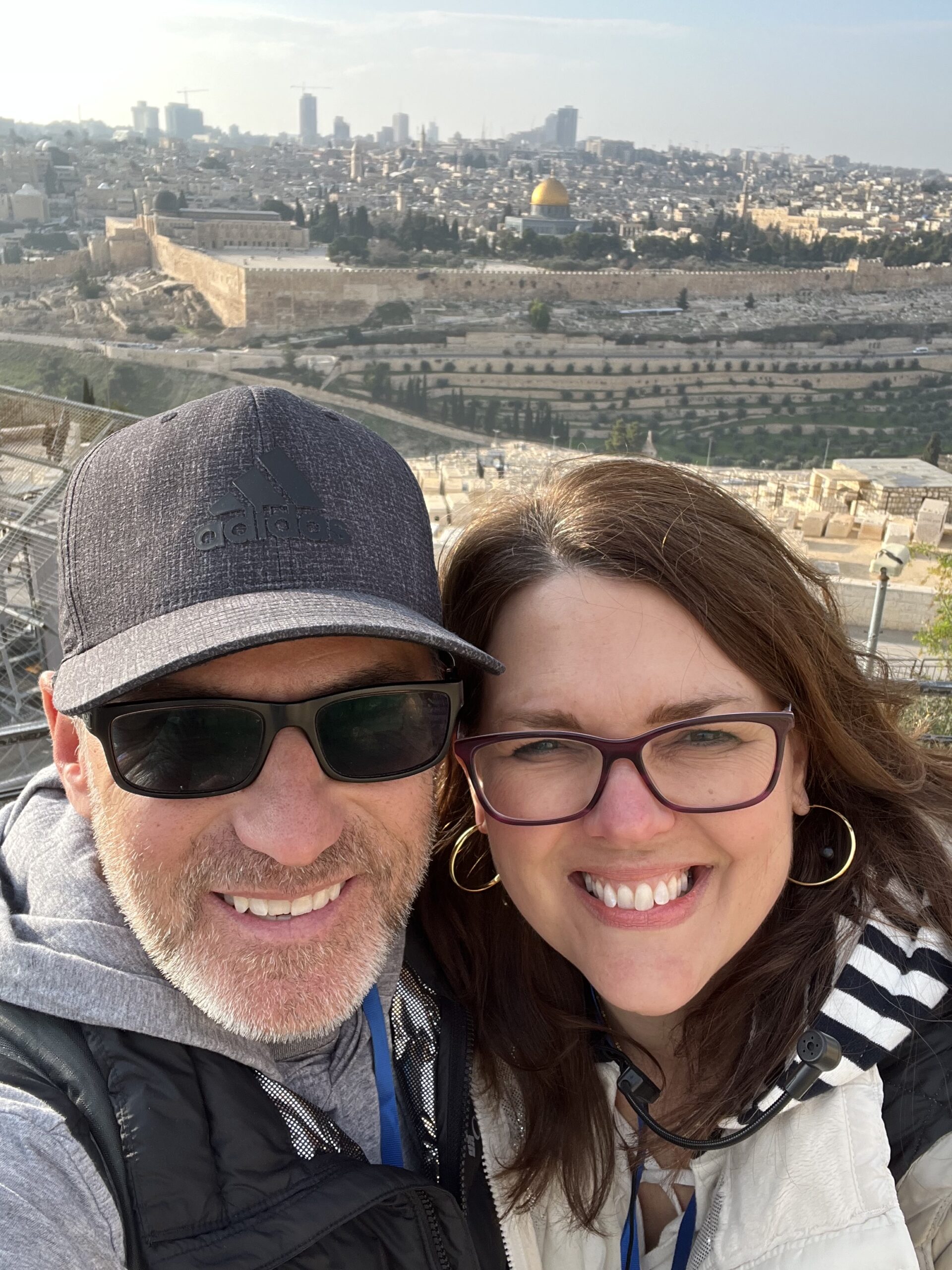
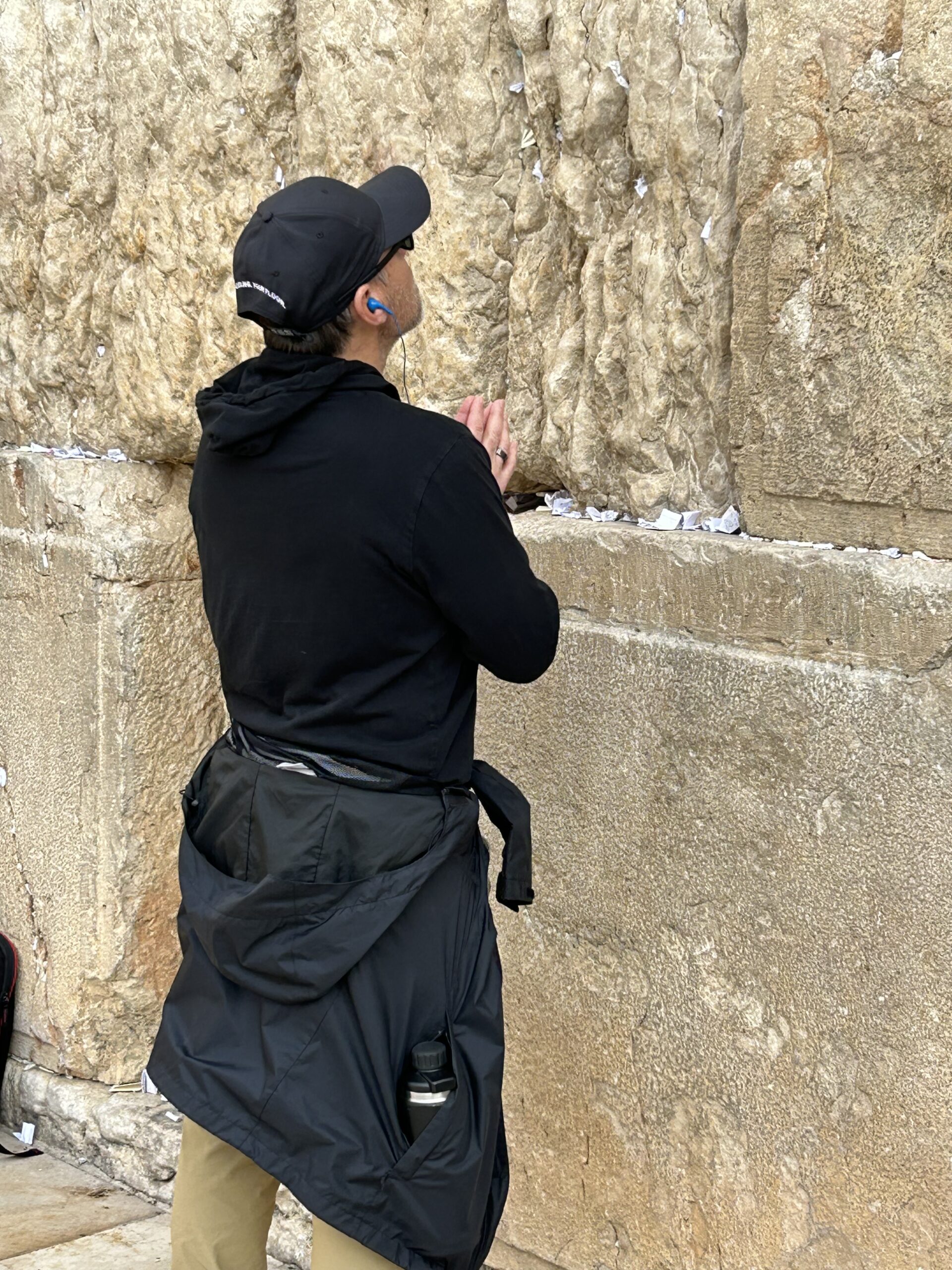
- The Sea of Galilee is breathtaking, surrounded by mountains, including Mt. Arbel, which overlooks Magdala. When the Scripture speaks of Jesus rising early to go “up to the mountain to pray,” experts believe he climbed here. We stood on Mt. Arbel and breathed in the vastness of the sea and the ribbon of towns below where Jesus preached and healed.
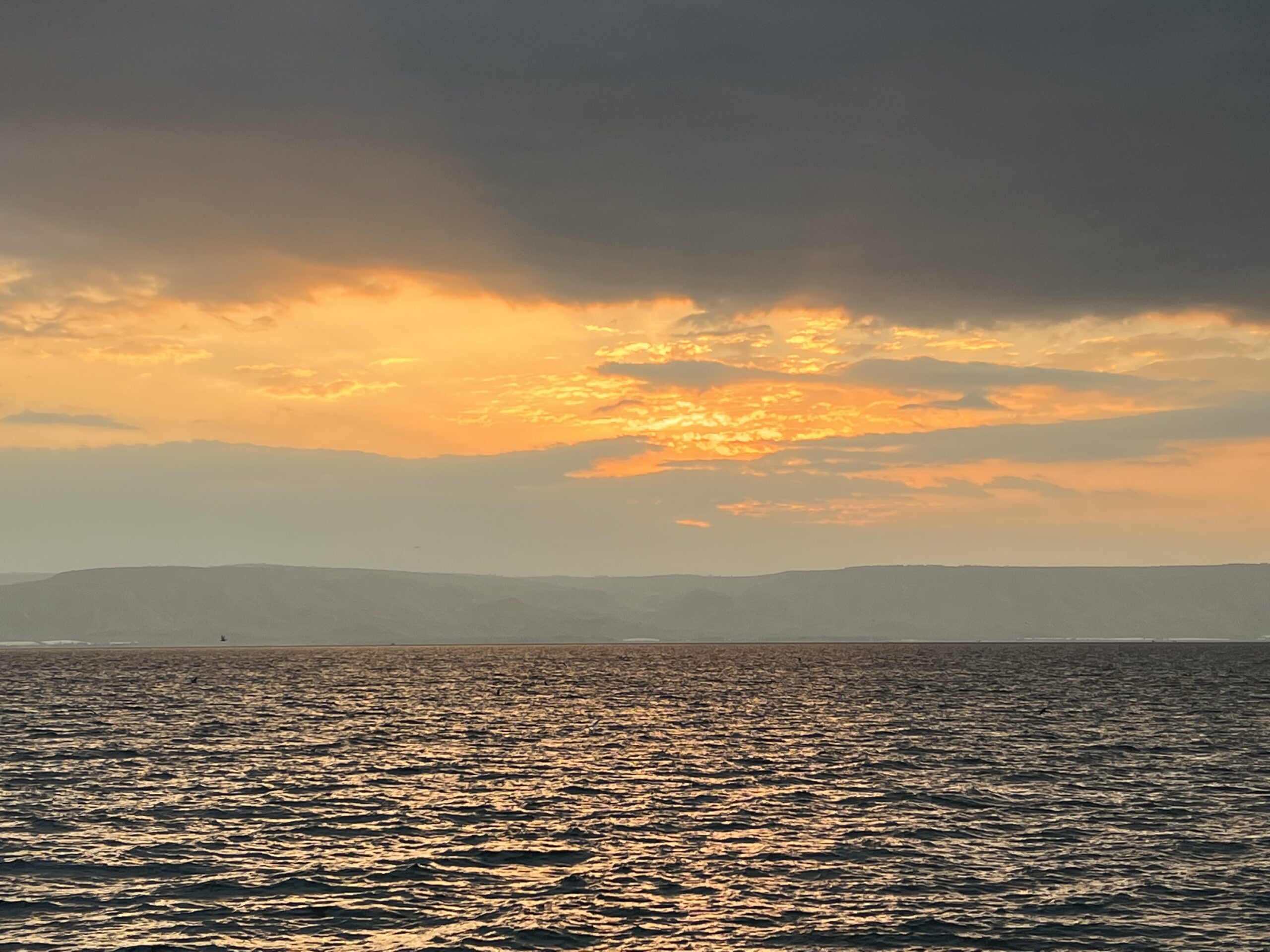
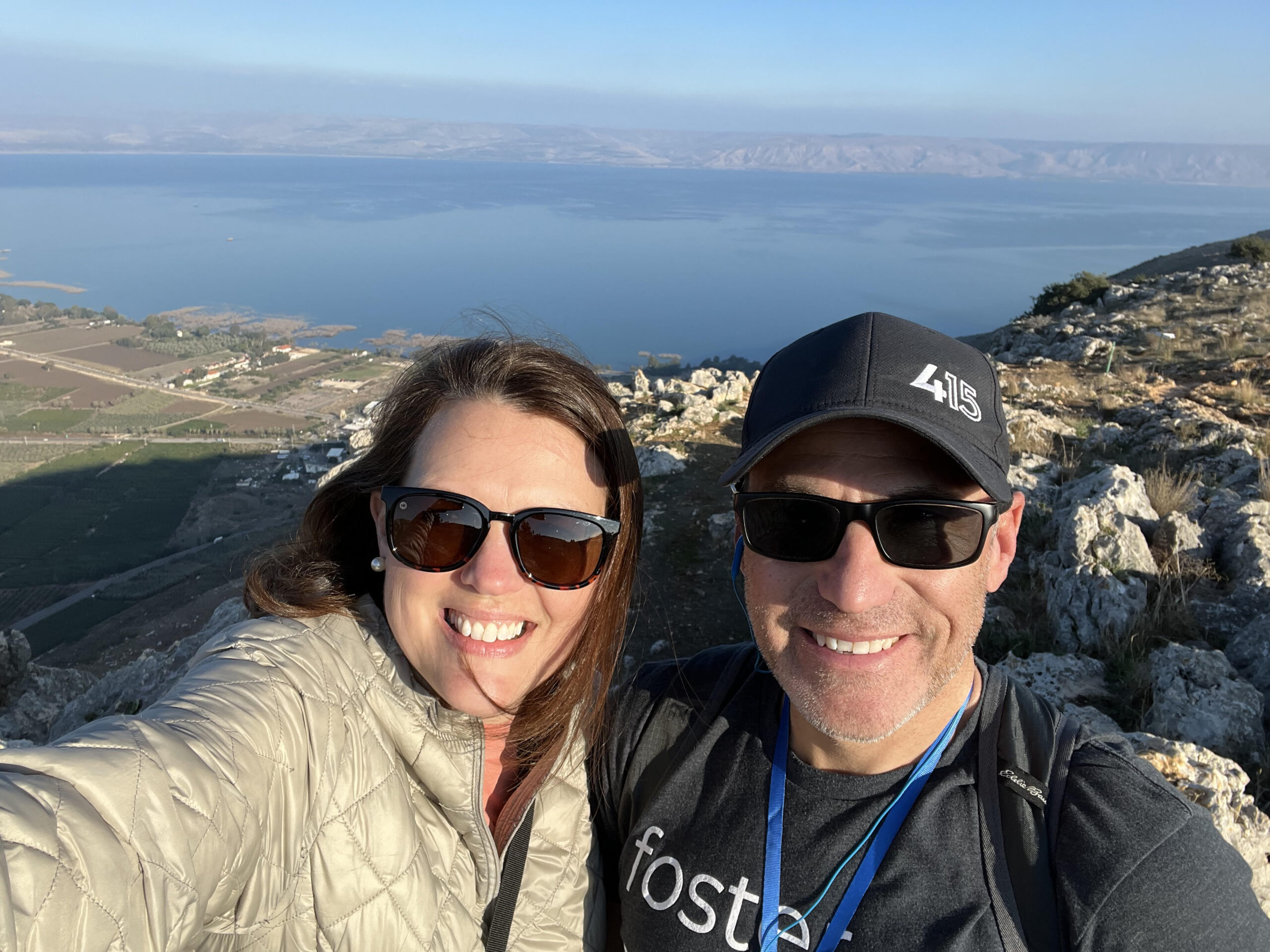
- The Temple Mount (site of Solomon’s Temple, destroyed 3 times) is Mount Moriah. Abraham offered Isaac on the altar here, and Solomon built the Holy of Holies for the Arc of the Covenant on the same spot centuries later. When we walked in the tunnels under the Temple Mount, we walked on first-century Jerusalem streets (where Mary and Joseph searched for Jesus!) and touched the red rock of Mount Moriah. So cool!
- The Jordan River is brown (very muddy) and freezing–like 45 degrees. We were baptized at the presumed spot where John the Baptist immersed Jesus, where God’s voice spoke from heaven “This is my beloved Son, in whom I am well-pleased.” We didn’t hear a voice, but the act of displaying our resolve to follow Jesus seemed nearly as impactful. Shane and I baptized each other and prayed destiny over each other in that frigid river. I almost lost him in the murky waters, but we got some good pictures out of it.
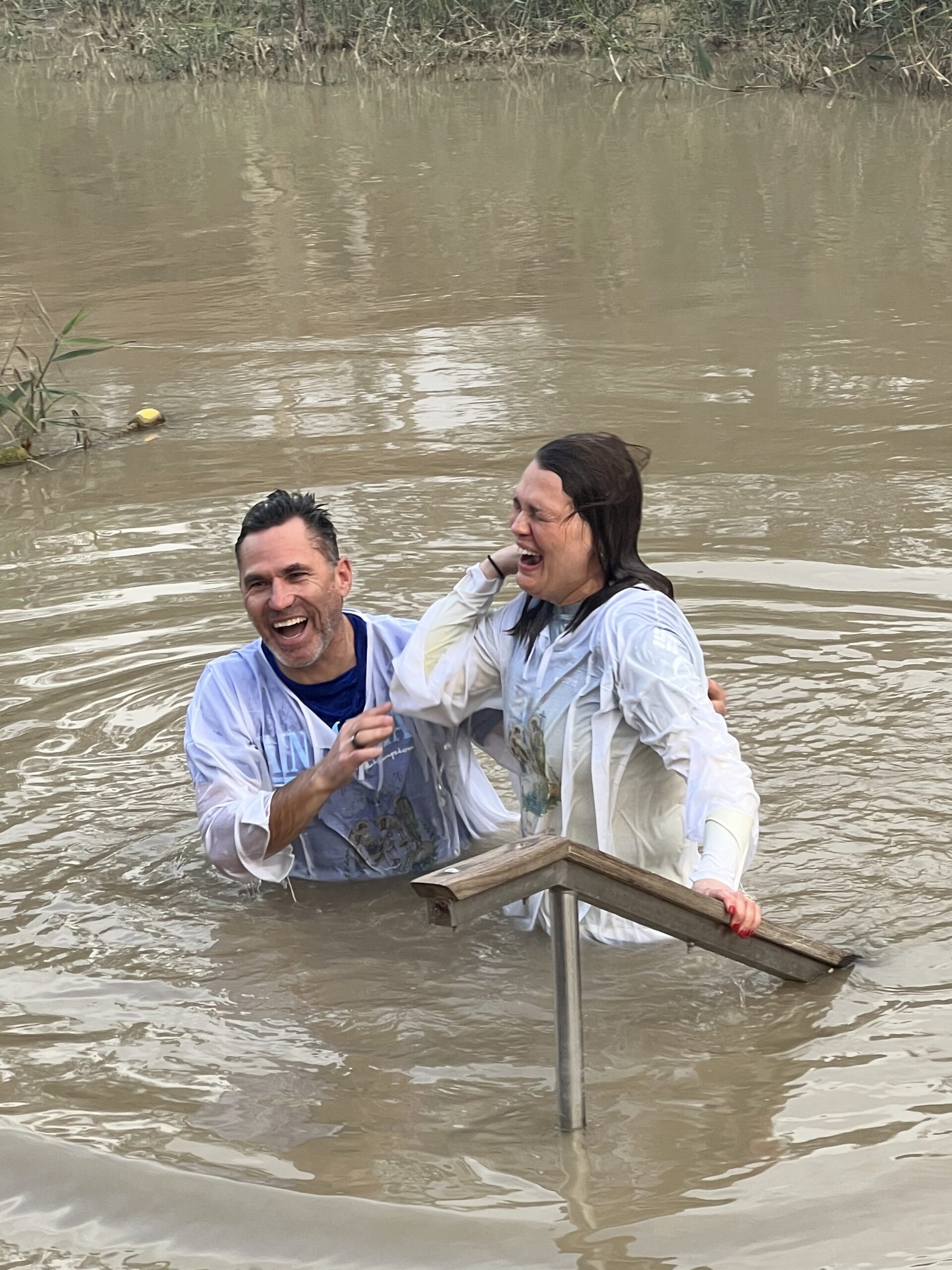
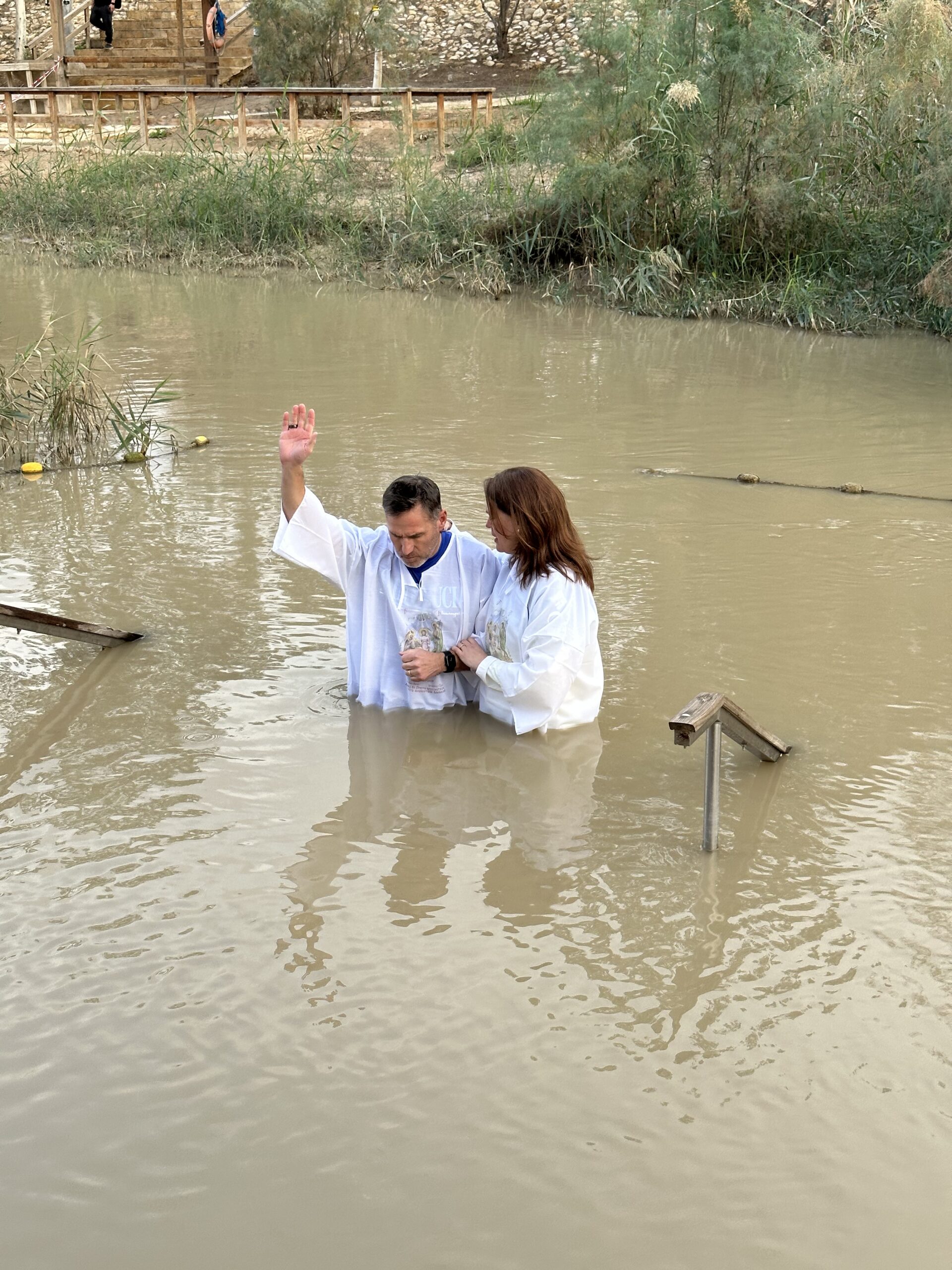
- Jesus lamented over Jerusalem at the Mount of Olives, before riding a donkey down the mountain through the Kidron Valley and entering Jerusalem through the Eastern Gate on Palm Sunday. It’s the same path Jesus will take when He returns to earth to set up His millennial reign. Consequently, the Muslims, who control the Eastern Gate, have walled off the entrance and guard it with automatic weapons, round the clock. They’ve surrounded the walls with Muslim gravesites because they don’t think Jesus would walk across anybody’s grave to get to the gate. (All this security from a religion that doesn’t believe Jesus is God and doesn’t believe in His resurrection or triumphant return!)
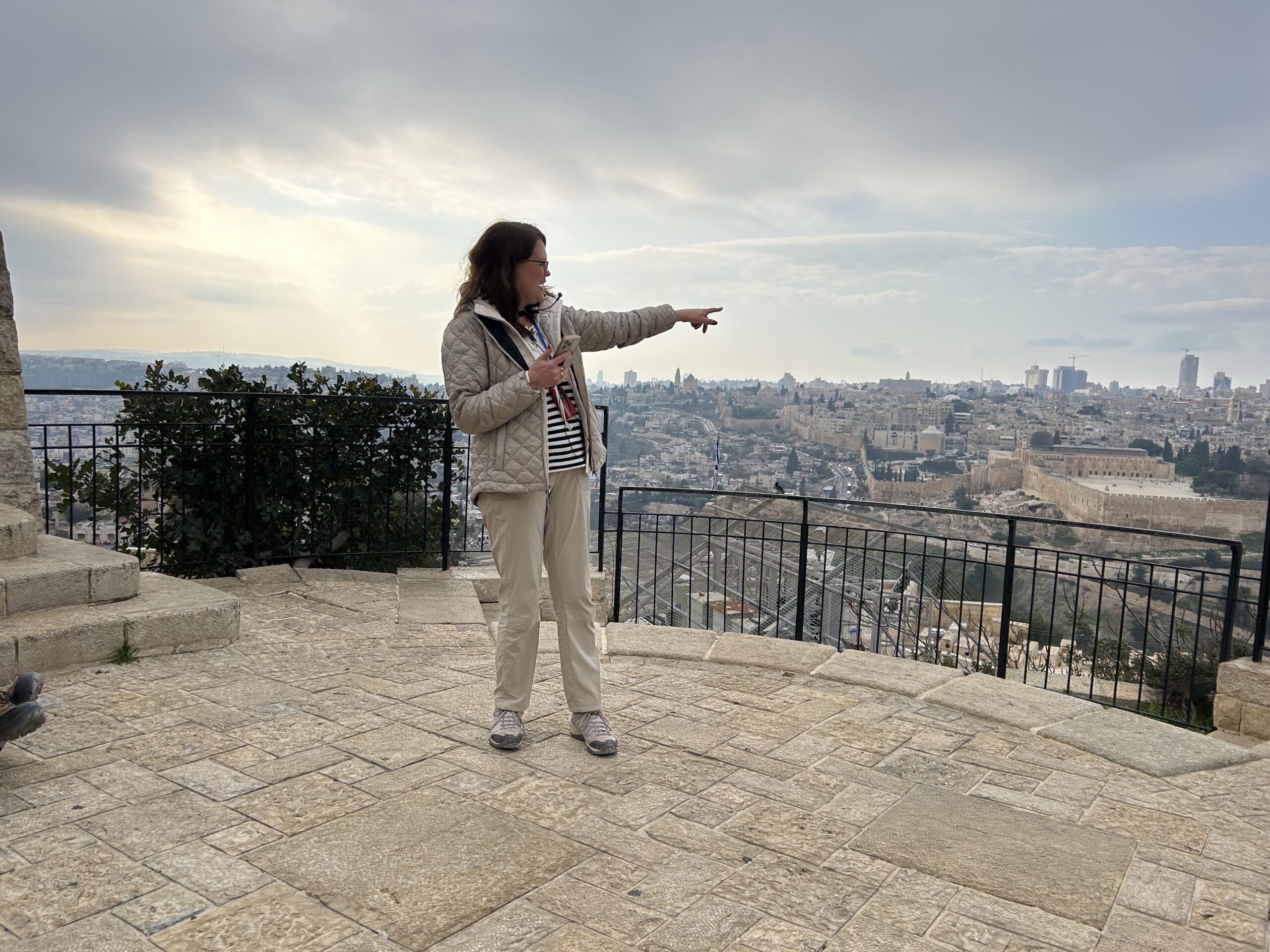
- “Gethsemene” means “olive press.” The garden of Gethsemene is filled with ancient olive trees. I began crying the moment I walked through the gate. The olive tree can regenerate itself from the root system even after the tree above ground had died. Isaiah 11:1 says of Jesus, “A shoot will come up from the stump of Jesse; from his roots a Branch will bear fruit.” How fitting for the Branch Himself to pray in an olive grove for the resurrection of humanity! Olives are pressured until the oil emerges–oil that is used for anointing a person–setting someone apart for a special calling and purpose. Anointing oil protects and seals that person for God’s work, and Jesus knew His work! He had announced His anointing from His first public Scripture reading in Nazareth: “The Spirit of the Lord is on me because He has anointed me to preach the good news…” (Isa. 61:1, Luke 4:18).
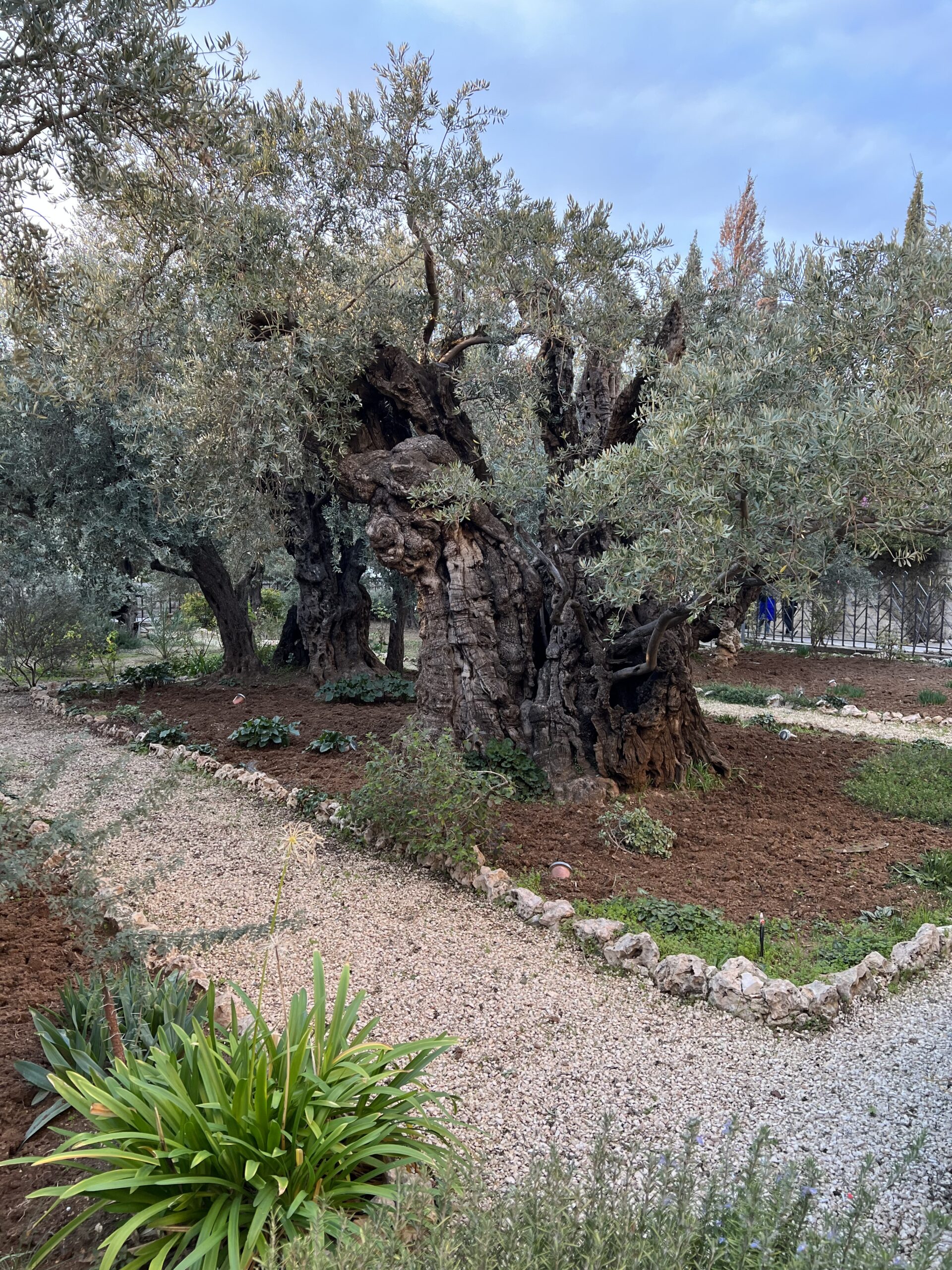
- Elijah called down fire from heaven on Mount Carmel, which overlooks the fertile Jezreel Valley. It’s the same valley where Armageddon will happen, where God’s wrath and holiness will once again wipe out all those who have rejected Him.
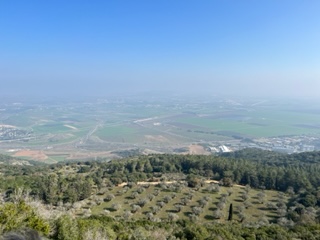
- Jesus eventually cursed Capernaum, Bethsaida, and Chorizin for rejecting Him. These towns are still uninhabited, full of ruins from Jesus’ day, including Peter’s house and the synagogue built by Jairus. Shane preached a message of healing midst the ruins of Capernaum, where many witnessed healings by Jesus (including Peter’s mother-in-law, Jairus’ daughter, the women with the issue of blood).
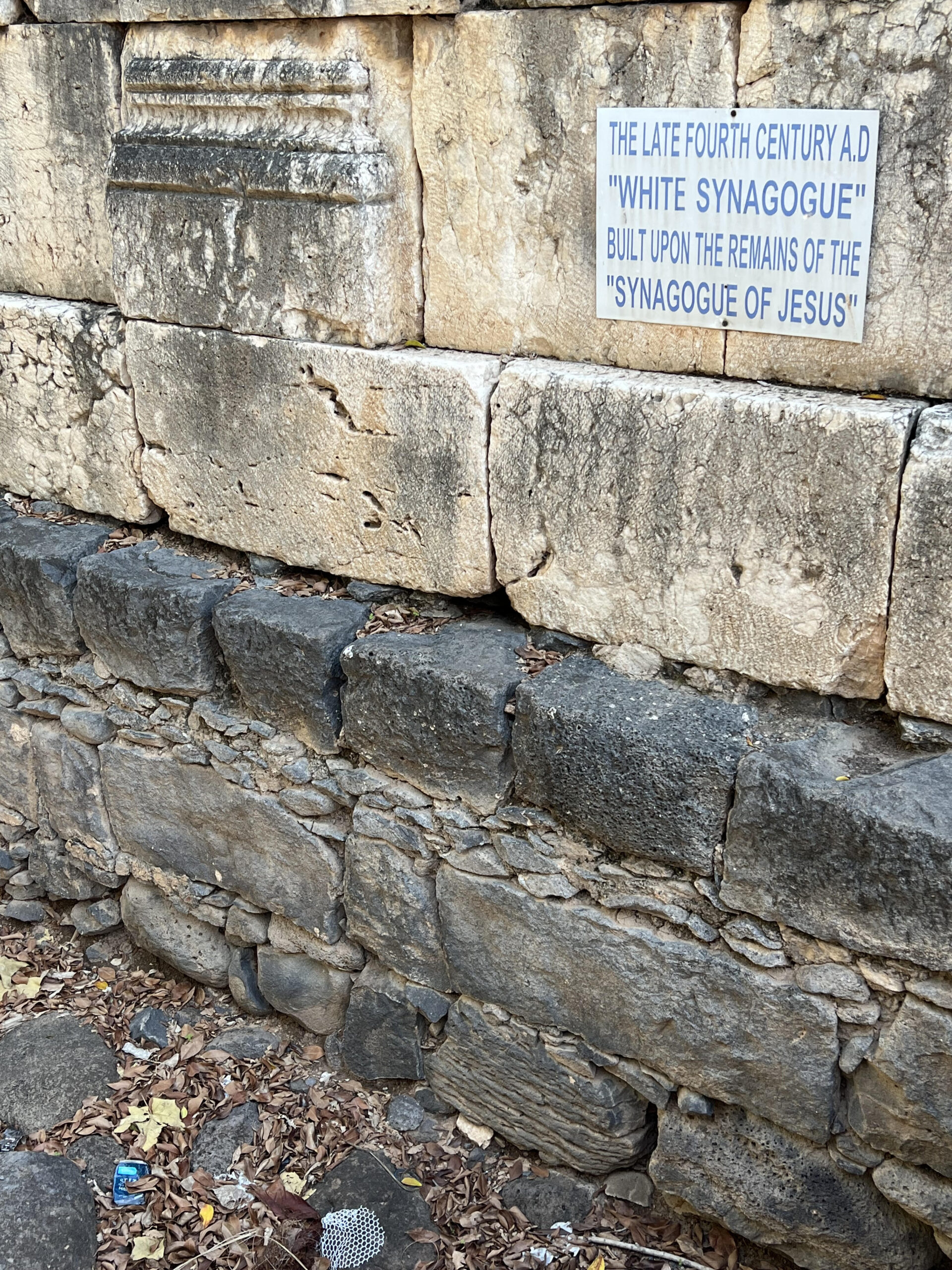
- Nearly 900 Jews held out against Rome for 3 years at Masada, Herod’s desert fortress. They were the last to resist once the Roman persecution began and the Temple was leveled. I remembered the story from the Peter O’Toole movie of 1981. But to walk the ruins–wow! To see the rocks still there, thrown from Roman trebuchets, the siege ramp still leaning against the mountain wall, the palace rooms the Jews refused to sleep in because they were Herod’s. I didn’t know the Jews had built a synagogue on Masada during their 3-year resistance (they determined to continue practicing their faith). They diligently copied the word of God. Scrolls were found in the ruins that match some of the Dead Sea Scrolls. Also found were the lots that the men cast to determine who would kill themselves at the end, after killing the other 900 so the Romans couldn’t butcher, rape, and enslave them. You can see the Dead Sea through this window.
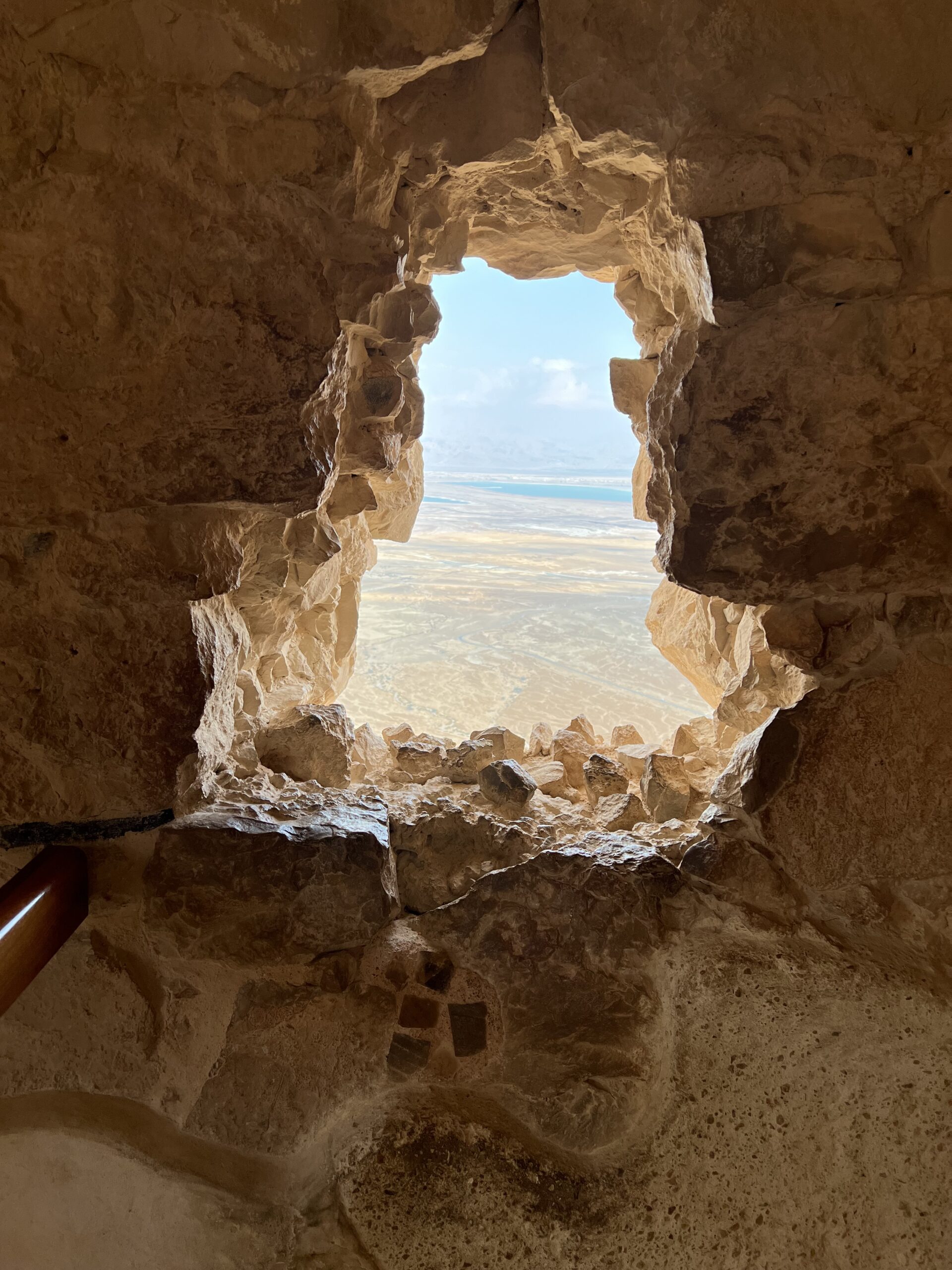
- The stable where Jesus was born is a cave carved out in the hillside of Bethlehem. People kept their animals in hollowed spaces below their living space. The Bethlehem hills hold important history and family lineage: it’s where Ruth gleaned in Boaz’ field, where David wrote Psalms, and then where angels announced Jesus’ birth, the completion of the line of David. Today Bethlehem is in Palestinian territory; Israelis aren’t allowed to enter.
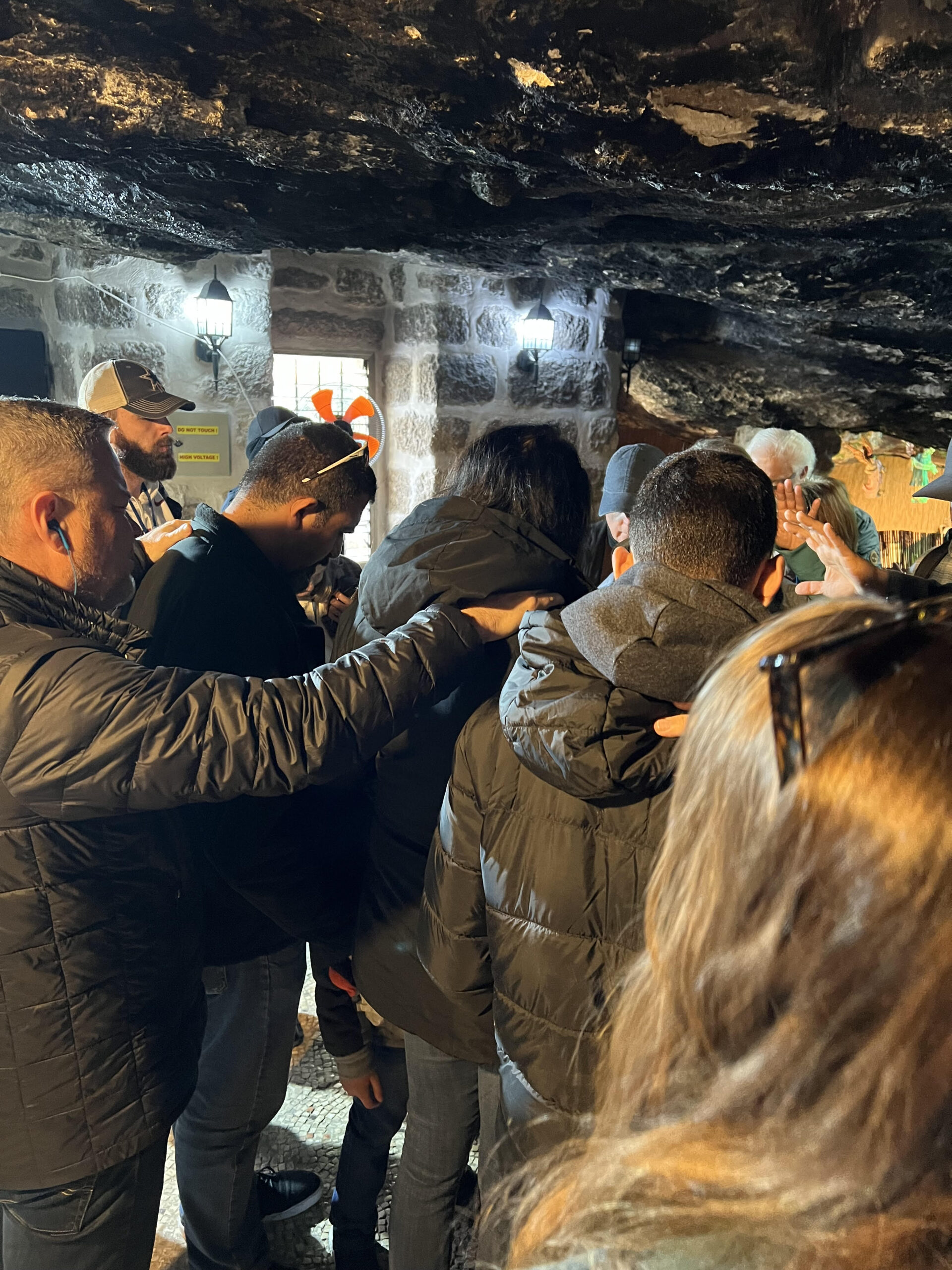
this is a possible spot for Jesus’ birth
- The Place of the Skull (Golgotha/Calvary) really looks like a skull. Over time, erosion has whittled away much of the nose, but you can clearly see the 2 caves that look like eyes. Jesus’ cross likely stood at the foot of this rock formation, not on top of it. Crosses were excavated from the ground in front of Skull Rock, just feet from the main road around Jerusalem and not far from the city gates. The Romans placed all their crosses right next to main roads so everyone would have to see individuals’ torture and shame up close–and be frightened and revolted by it.
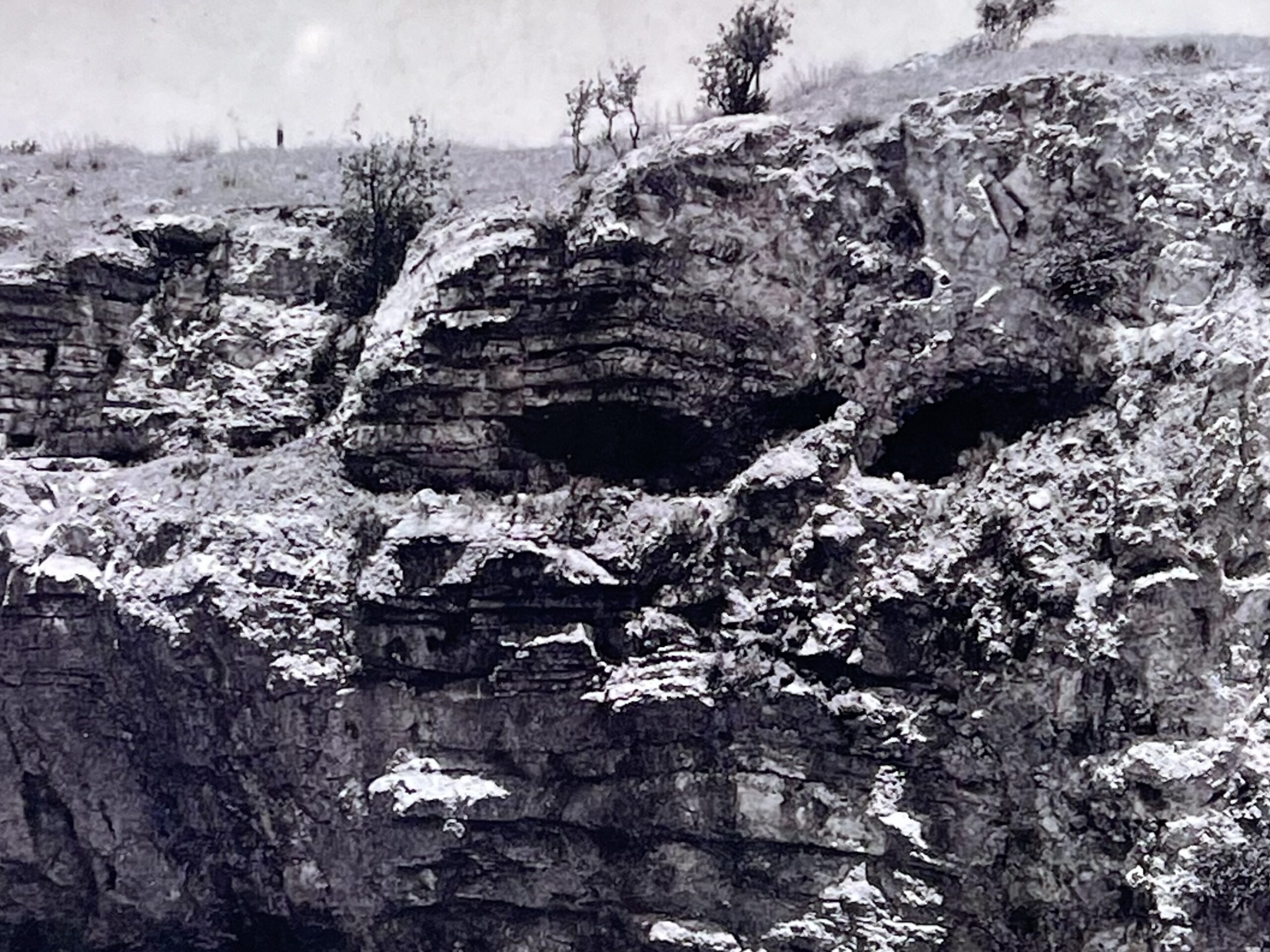
- The Garden Tomb was a working garden owned by Joseph of Arimathea. He and Nicodemus gave up their Passover preparations to hurriedly carry Jesus’ body to the tomb and prepare it before nightfall. I didn’t know that bodies lay embalmed for a year until the corpses rotted. After that, the family would open the tomb and collect the bones into bone boxes, which would be stacked in the family sepulcher along the walls. Only Jesus’ body never decomposed! Praise the Lord! He’s not in a box or a tomb.
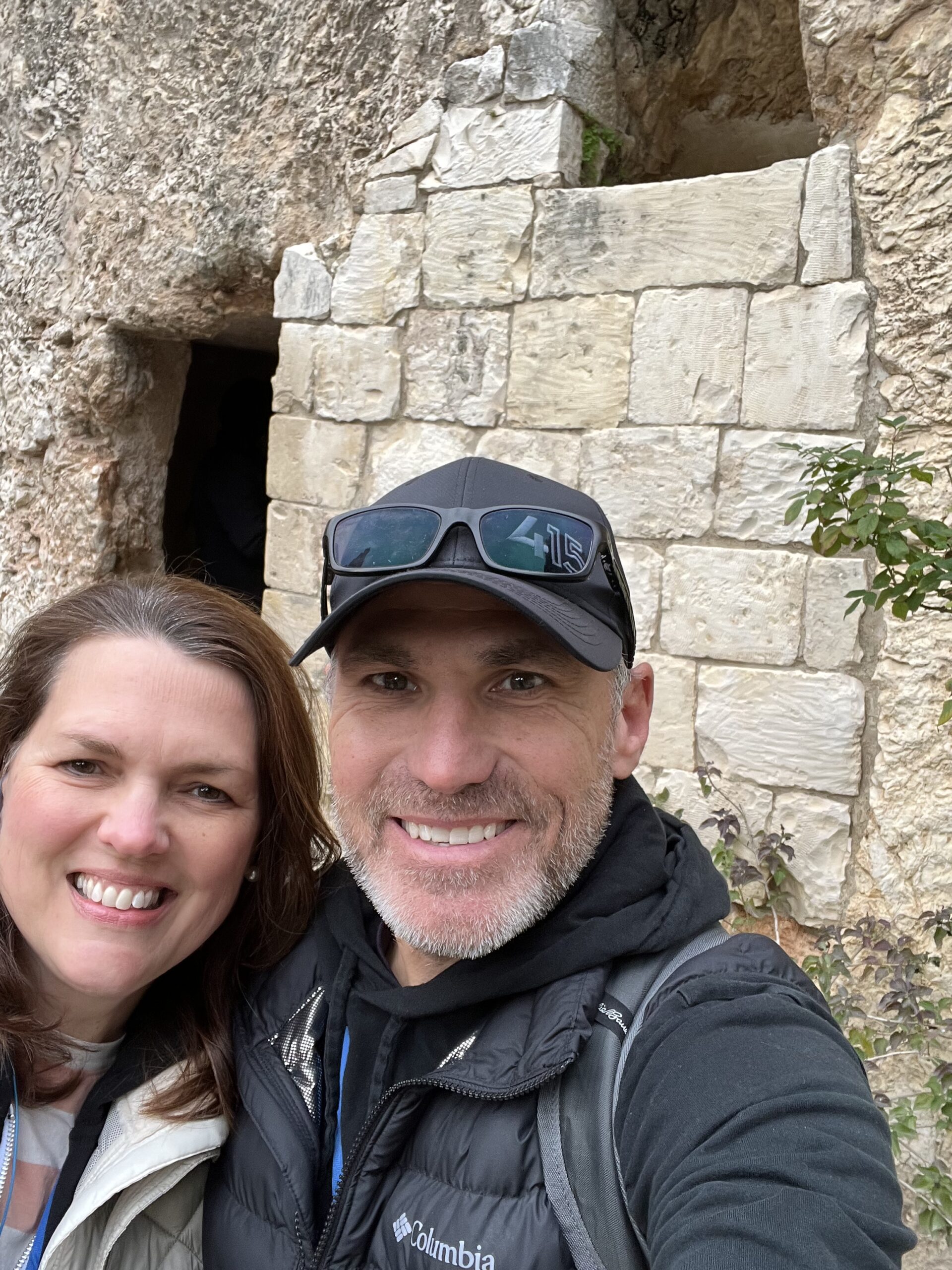
- I didn’t know that I could cry instantly in a place I’ve never been. As we drove into Jerusalem, the tears started. When I stepped out on the Mount of Olives to deliver a devotional, with Jerusalem’s walls behind me, I couldn’t find the words, and my voice kept quivering. When I stepped through the gates of Gethsemene and viewed those ancient olive trees (and a first-century rock where Jesus might have prayed), I broke down sobbing. Oh, to be in the presence of such great sacrifice!
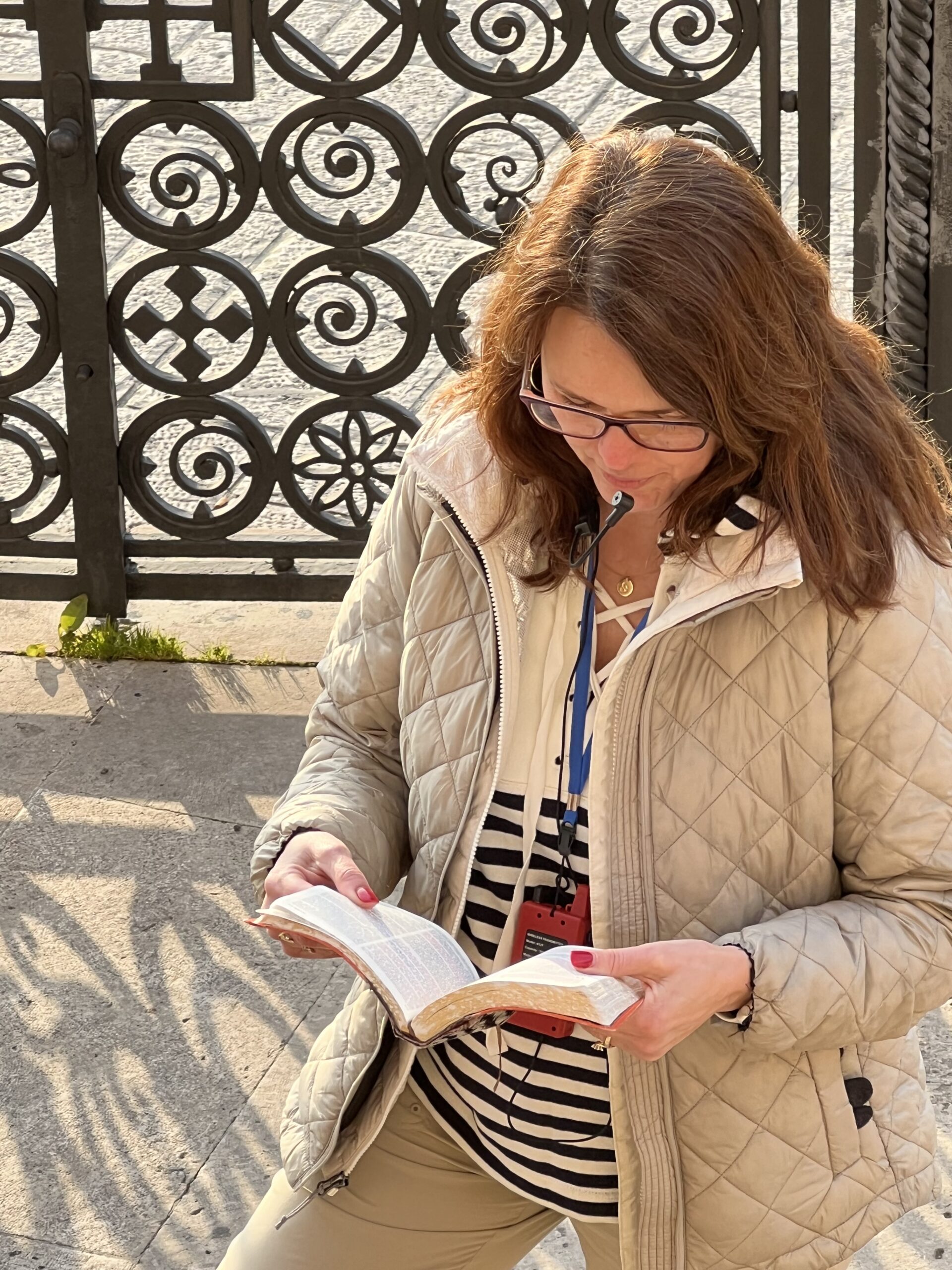
Every believer must go to the Holy Land. We had always heard that. We always wanted to go. We were daunted by the expense. How silly. I am forever changed. Perhaps I am a true follower of Jesus now that I’ve been on a pilgrimage to where He walked and lived.
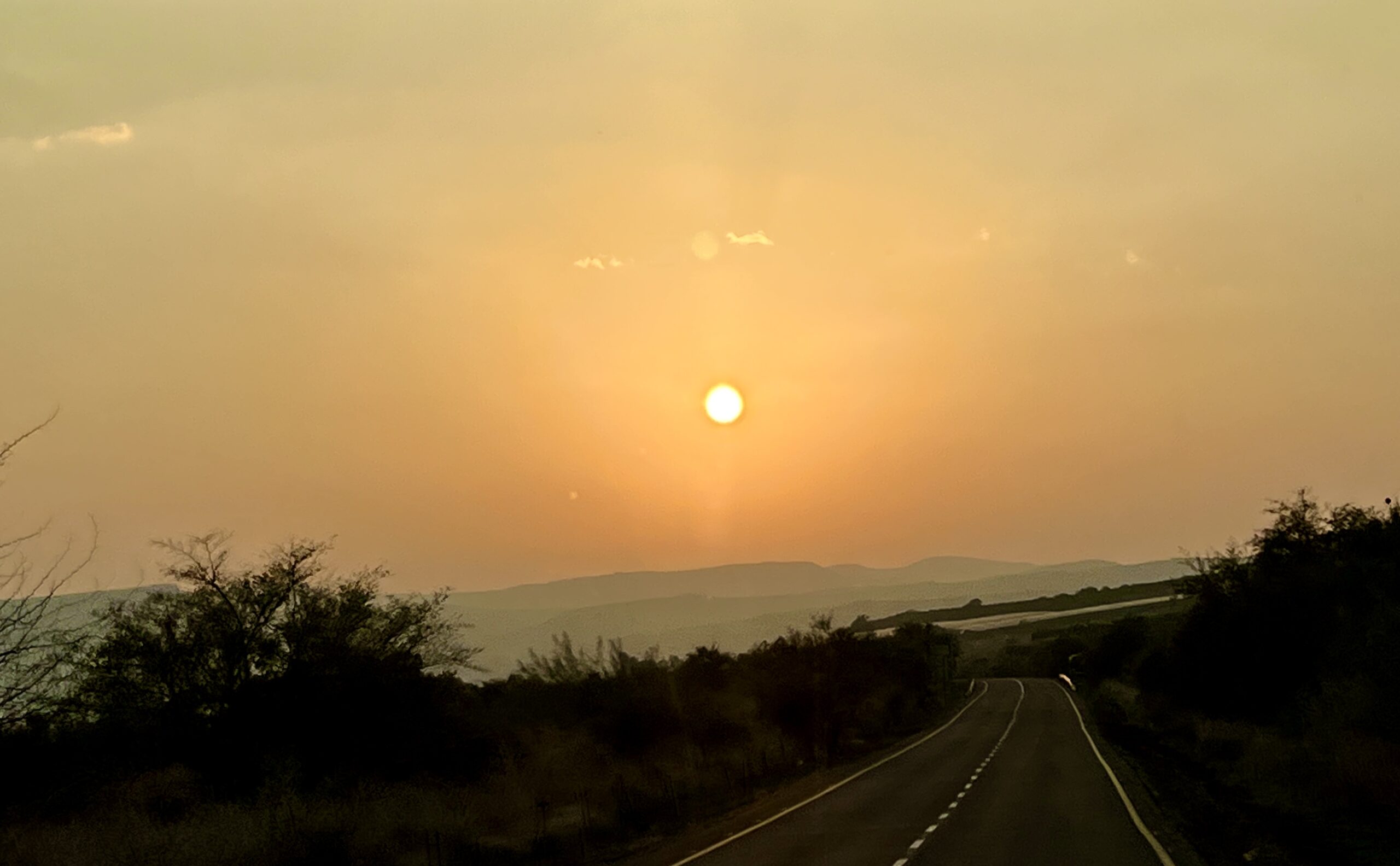
If you want to join us in the Holy Land on another trip, we hope to be leading a trip in the not-too-distant future. Check my website for announcements and pray that it happens! And if you don’t go with us, go with someone. Just go!

entering the amphitheater at Caesarea-Philippi, built by Herod Antipas
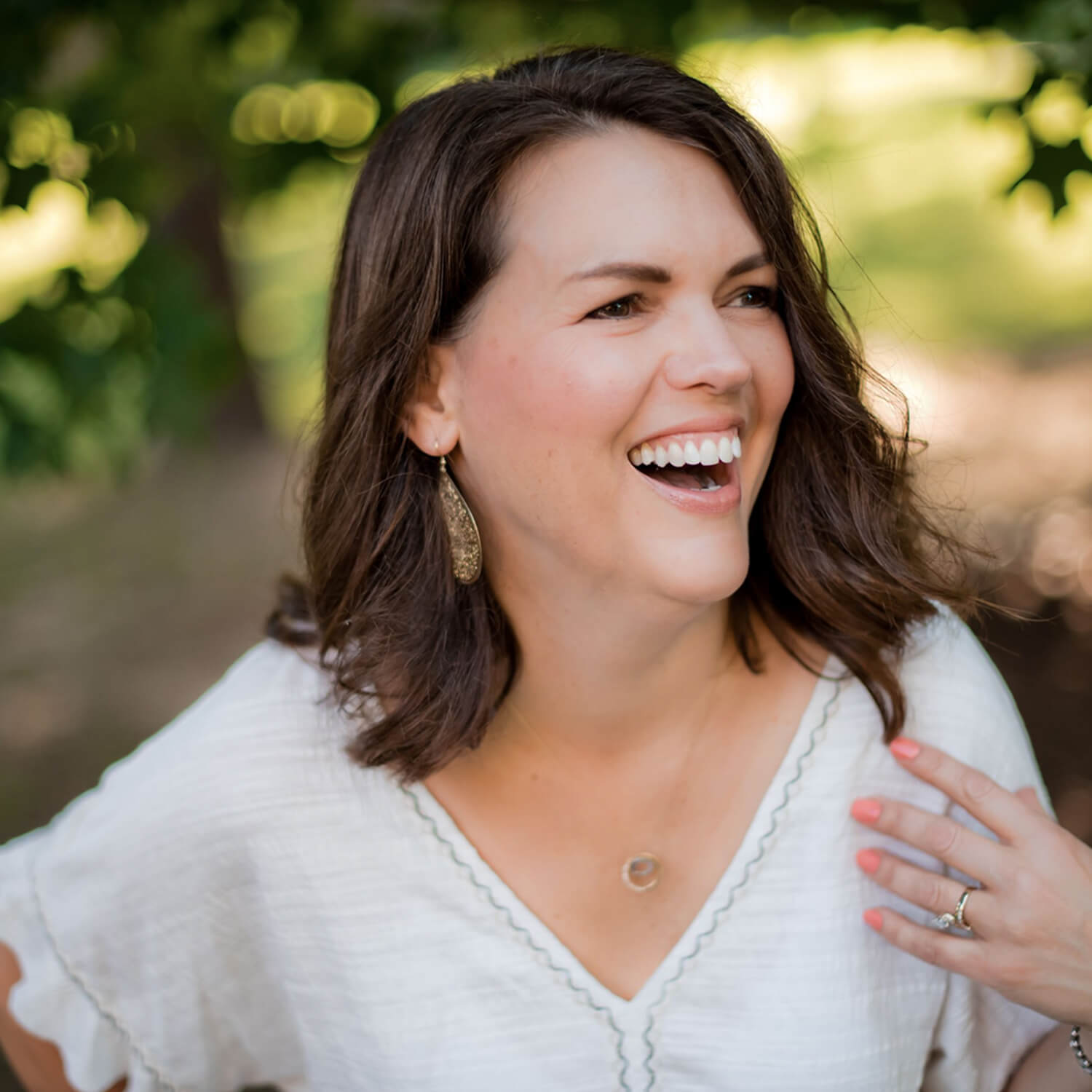

The Conversation
I wish I knew how to absorb everything & express myself, Sue, like you do. Scripture gently reminds us the futility of comparing ourselves with others. So grateful God has given you the talents & expression that you possess & reading this blog for the 2nd time on 2.23.23. the memories sweep over & in me. Still processing Day 2 we spent in the land where Jesus lived. Will be processing the 12 days for the rest of my life & hope to revisit. Thank you immensely & am sharing this link on my FB page along with my husband’s page. Shalom + Shalom Serenity to you & yours as we pray for the peace of Jerusalem along with LOVING MANY into Jesus’ Free Forever Family….
Cindy, thank you for commenting and for your kind words. I agree about Israel! What a wonderful experience. So glad you’ve also been there. I can’t wait to go back!
Thanks Sue, after being home for a week it’s been difficult to settle and refocus after the experience we all share in Israel. This post has helped. This is such a great recap of the experiences. It helps me recall some of the things I had forgotten. I will be looking forward to more of your post. I will keep you and Shane in my prayers.
Thanks, Pat. I hope you have recovered by now. It’s so hard to re-enter normal life whenever God touches you in a such a profound way. Plus, the enemy always plots to dismantle the spiritual work that God has done. Thanks for writing! So glad you were on the trip.
Wow, so good, Sue! You captured so much of our experience. Encountering Jesus in the land where He lived & loved!
All thanks you you and Mark’s leadership. Thank you for inviting us on this unforgettable journey! Can’t wait to go back and learn more.
Thank you for sharing! And please keep us posted on the next scheduled trip to the Holy Land…we would like to be included.
Awesome! Will do!